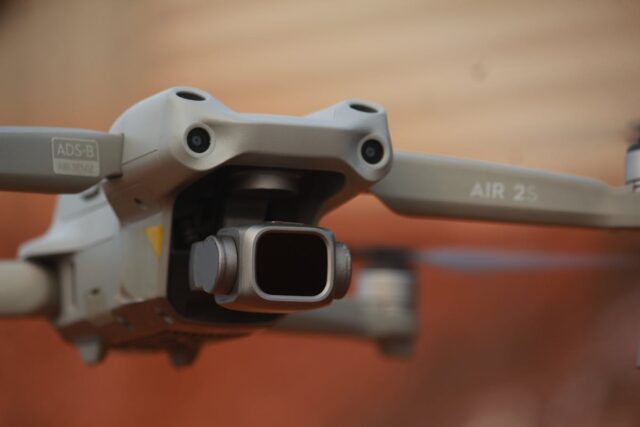What is Aquaculture Innovation Technology?
Aquaculture innovation technology is reshaping the way fish farming operates. With the rise in global demand for seafood, efficient and sustainable solutions are necessary. Technology provides tools to monitor, automate, and improve aquaculture processes.
From IoT-driven monitoring systems to AI-powered predictions, advancements in this field are remarkable. Farmers can now address challenges like water quality and feed optimization with ease. The shift to innovation ensures sustainability and growth.
The Role of Technology in Modern Aquaculture
Technology serves as the backbone of modern aquaculture. Smart tools offer real-time data on fish health, water temperature, and oxygen levels. This ensures farmers can make informed decisions quickly.
For example, water quality monitoring systems are essential. These tools detect changes in pH, salinity, and oxygen, helping farmers prevent potential losses. By automating tasks, technology reduces labor costs and human error.
Why Innovation is Key to Sustainable Fish Farming
Sustainability in aquaculture depends heavily on innovation. With traditional methods, resource consumption is high. Modern technologies like eco-friendly solutions and green energy tools address these inefficiencies.
Automation reduces waste and enhances productivity. It also minimizes environmental impact. By adopting smart farming practices, the industry can meet the rising demand without depleting resources.
Latest Advancements in Aquaculture Technology
Top Smart Systems Revolutionizing Fish Farming
Smart systems are transforming fish farming. One such innovation is IoT-enabled devices. These devices monitor water quality, fish behavior, and feeding schedules in real-time.
AI-powered feeding systems optimize feed usage. These systems analyze fish activity and distribute food accordingly. This reduces waste and improves growth rates. Additionally, drones and underwater robots play a role in inspecting large aquaculture facilities efficiently.
Water Quality Monitoring: A Key to Success
Maintaining water quality is critical in aquaculture. Poor water conditions lead to diseases and reduced yields. Advanced water monitoring systems continuously track parameters like oxygen levels, pH, and temperature.
Here is a comparison of traditional vs. modern water quality management:
| Parameter | Traditional Methods | Modern Technology |
| Monitoring Frequency | Periodic, manual | Continuous, automated |
| Data Accuracy | Variable | High |
| Response Time | Delayed | Immediate |
| Resource Efficiency | Low | High |
Modern systems improve accuracy and provide timely alerts. This ensures healthy growth conditions and minimizes losses.
Sustainable Aquaculture Solutions
Eco-Friendly Tools for Aquaculture
Adopting eco-friendly aquaculture tools is vital for sustainability. Technologies like biofilters and recirculating aquaculture systems (RAS) help recycle water efficiently. These solutions reduce waste discharge and conserve natural resources.
Furthermore, integrating renewable energy sources like solar panels minimizes carbon emissions. Sustainable practices protect ecosystems while ensuring profitability.
Green Energy and Waste Reduction in Fish Farming
Energy consumption and waste management are major challenges. Green energy solutions, such as solar and wind power, provide cost-effective alternatives. These systems reduce dependency on fossil fuels.
Additionally, advanced waste management tools recycle byproducts. For instance, fish waste can be converted into fertilizer or bioenergy. This circular approach benefits both the environment and the economy.
The Impact of Automation on Sustainability
Automation streamlines fish farming operations. By automating feeding, monitoring, and cleaning, farmers save time and reduce labor costs. Moreover, automated systems ensure consistent results.
For example, automated feeders reduce food wastage. This not only cuts costs but also minimizes environmental impact. Sustainability becomes achievable with efficient use of resources.
Challenges and Opportunities in Aquaculture
Overcoming Technological Barriers in Aquaculture
Despite the benefits, implementing technology has challenges. High initial costs and lack of expertise are common barriers. Small-scale farmers may find it difficult to adopt advanced aquaculture tools.
Collaboration between governments, private sectors, and researchers is crucial. Subsidies and training programs can support farmers in transitioning to innovative methods.
Future Trends in Sustainable Aquaculture Practices
The future of aquaculture lies in integrating digital tools with traditional practices. Emerging technologies like blockchain ensure traceability in seafood supply chains. This enhances consumer trust.
Additionally, the use of AI and big data analytics will grow. These tools enable precise forecasting, reducing risks and maximizing yields. The shift toward sustainable and transparent practices is inevitable.
How Digital Tools Are Shaping Aquaculture’s Future
Digital tools simplify complex processes in aquaculture. From smart farming systems to cloud-based platforms, technology ensures scalability. Farmers can access real-time data from any location, improving decision-making.
By leveraging digital tools, aquaculture can achieve higher efficiency and sustainability. The industry’s growth will depend on embracing these innovations.
Conclusion
The Path Forward for Aquaculture Innovation
Aquaculture innovation technology holds the key to meeting global seafood demands sustainably. By adopting smart tools, eco-friendly practices, and digital systems, the industry can thrive. Collaboration and continued investment in research will drive future advancements. The future of aquaculture is bright, powered by innovation and technology.
Frequently Asked Questions
1. What is the role of IoT in aquaculture?
IoT plays a vital role in monitoring and automating fish farming operations. It collects real-time data on water quality, fish health, and feeding schedules, ensuring optimal conditions.
2. How does automation improve sustainability in aquaculture?
Automation reduces waste, optimizes resource usage, and minimizes labor costs. It ensures consistent results and reduces the environmental impact of fish farming.
3. What are the benefits of using AI in aquaculture?
AI helps in analyzing data to predict disease outbreaks, optimize feeding schedules, and improve overall efficiency. It reduces risks and enhances productivity.
4. Why is water quality monitoring important in aquaculture?
Water quality affects fish health and growth. Continuous monitoring ensures ideal conditions, prevents diseases, and reduces losses in aquaculture systems.























